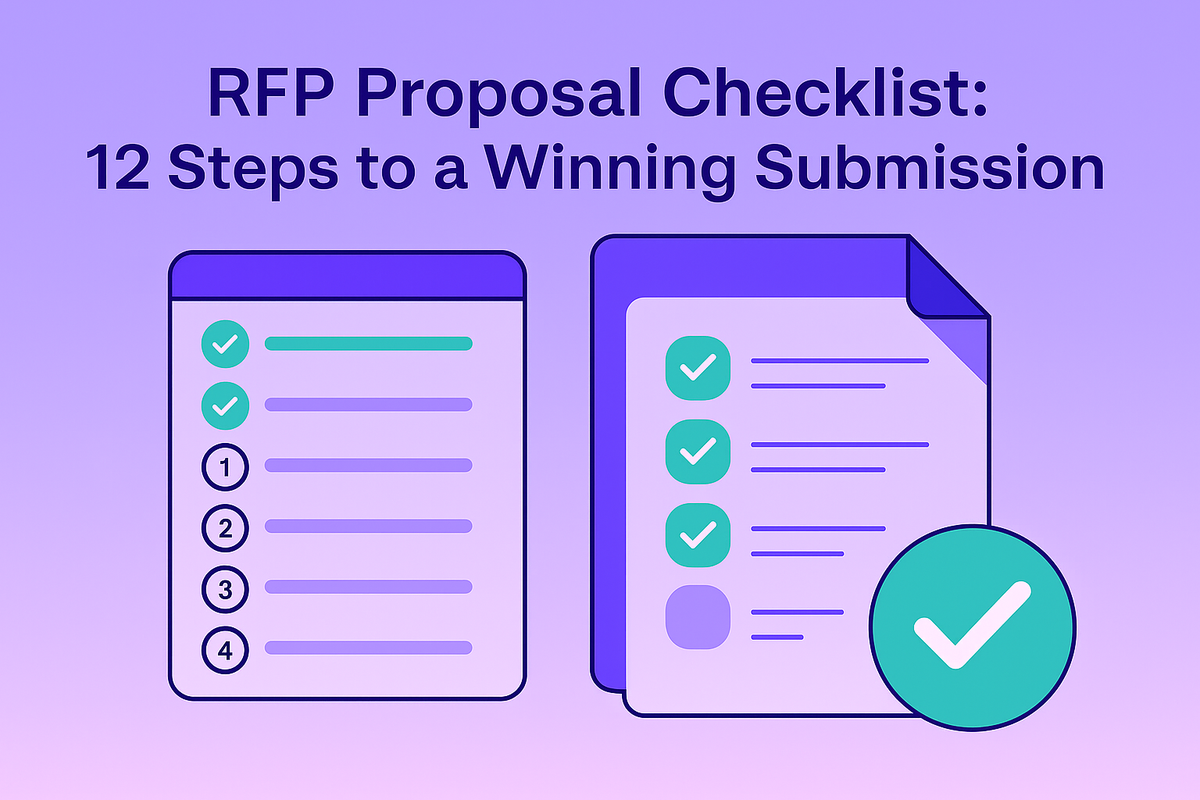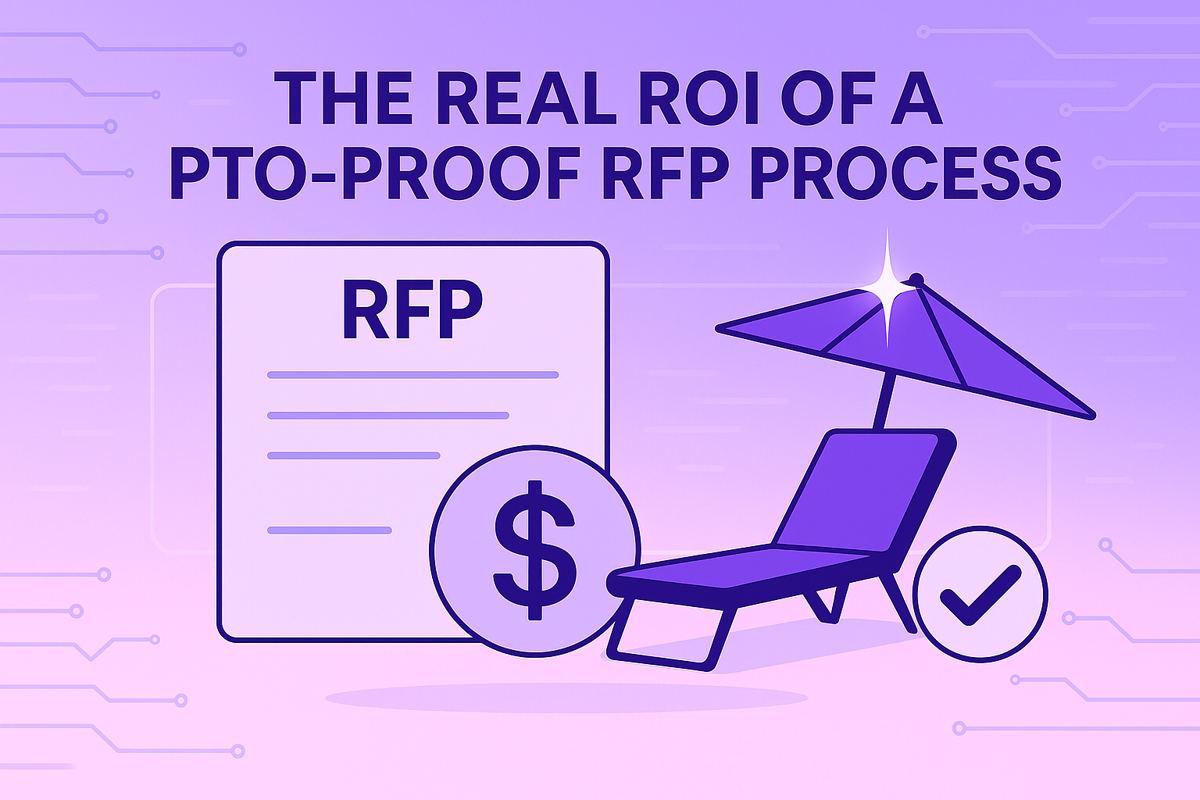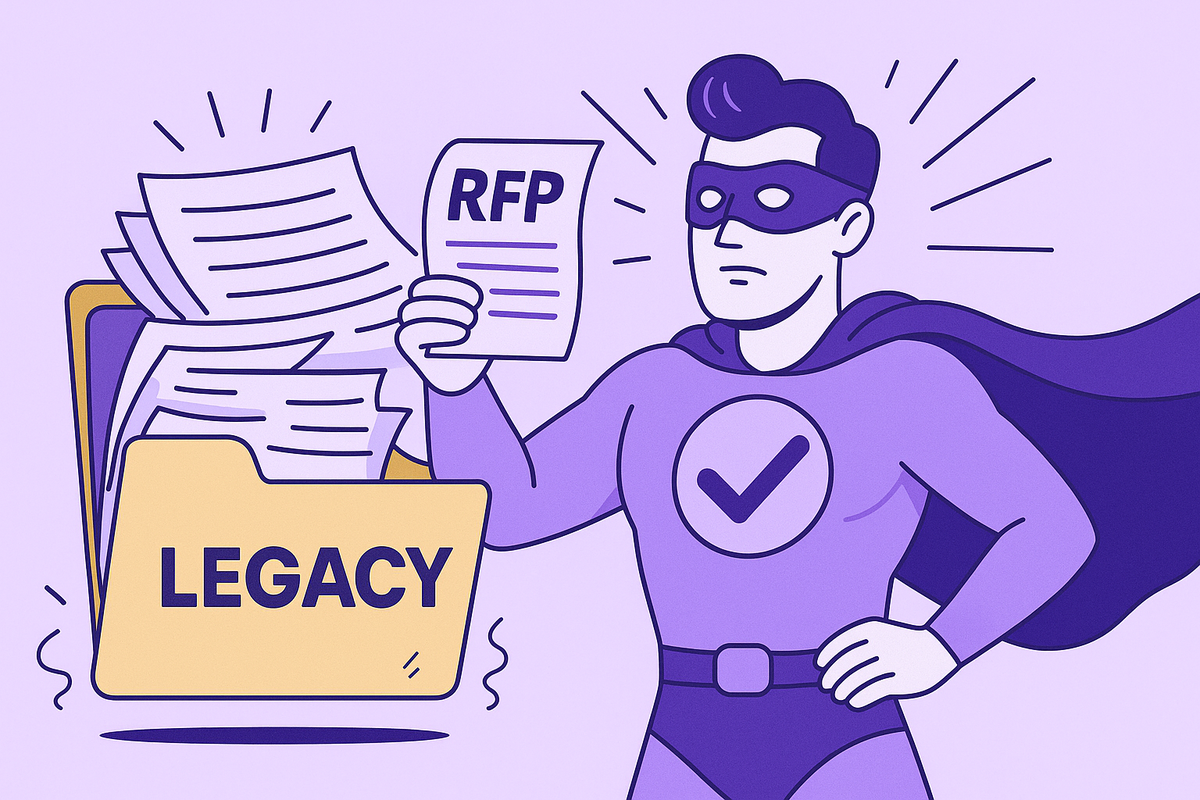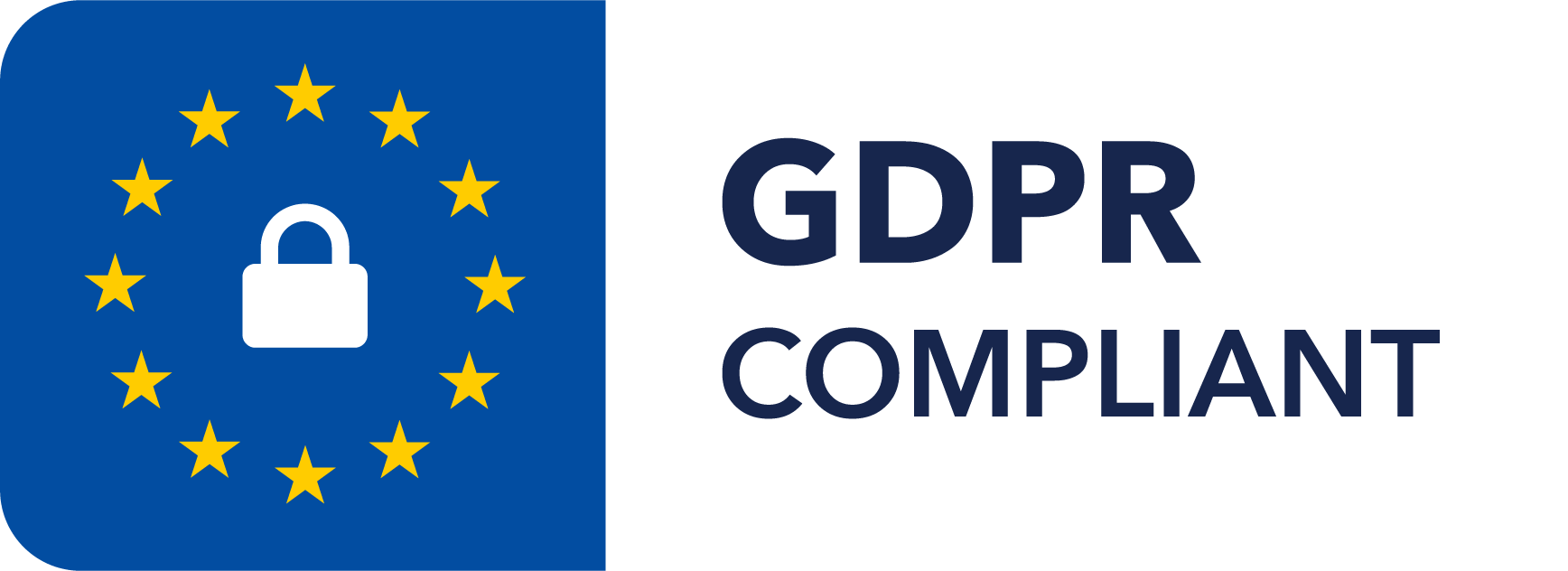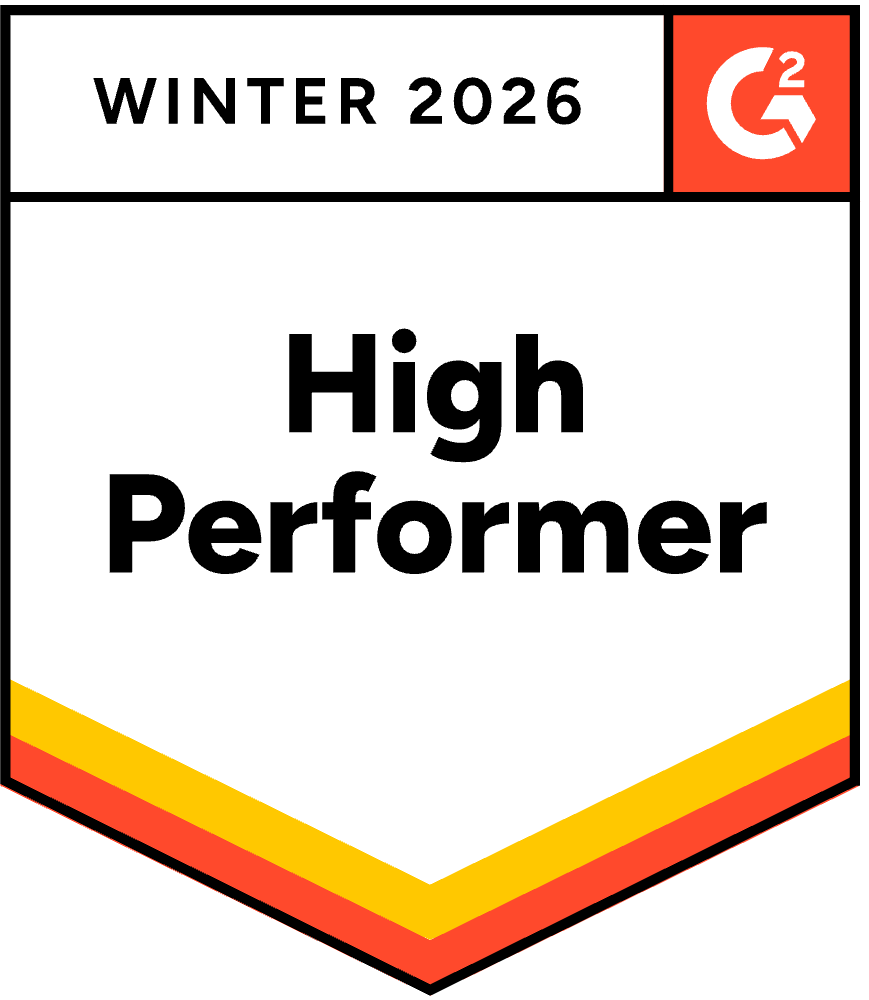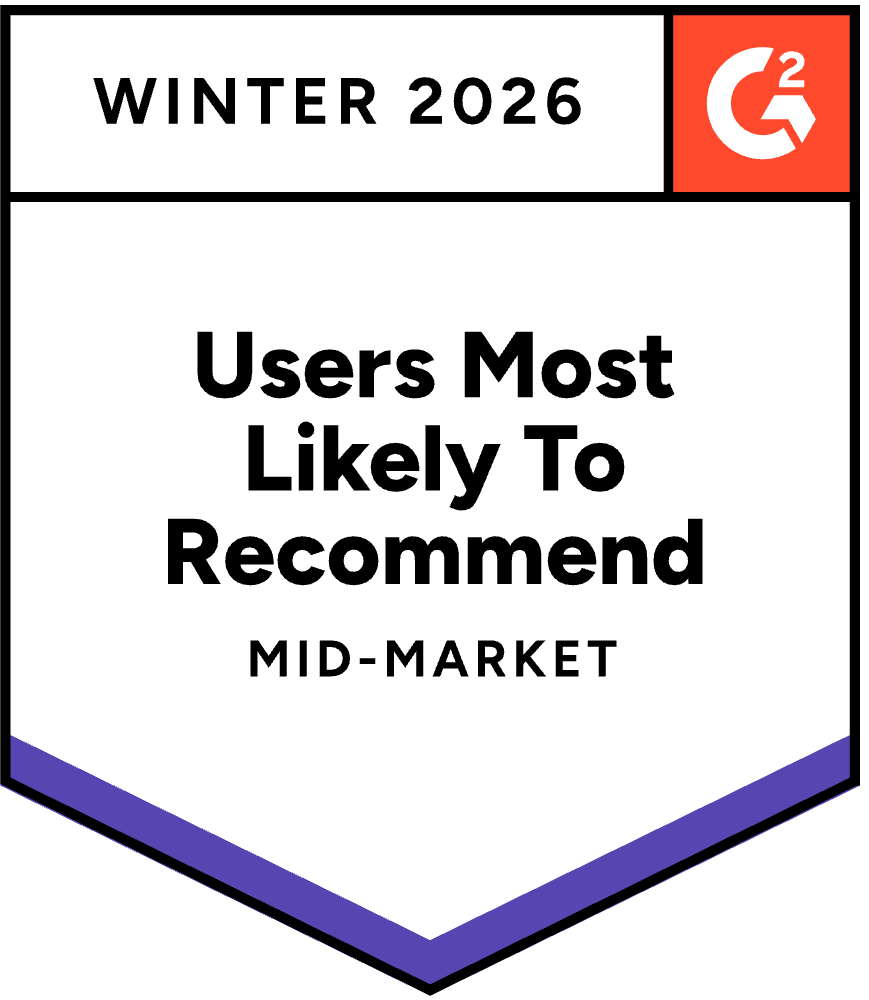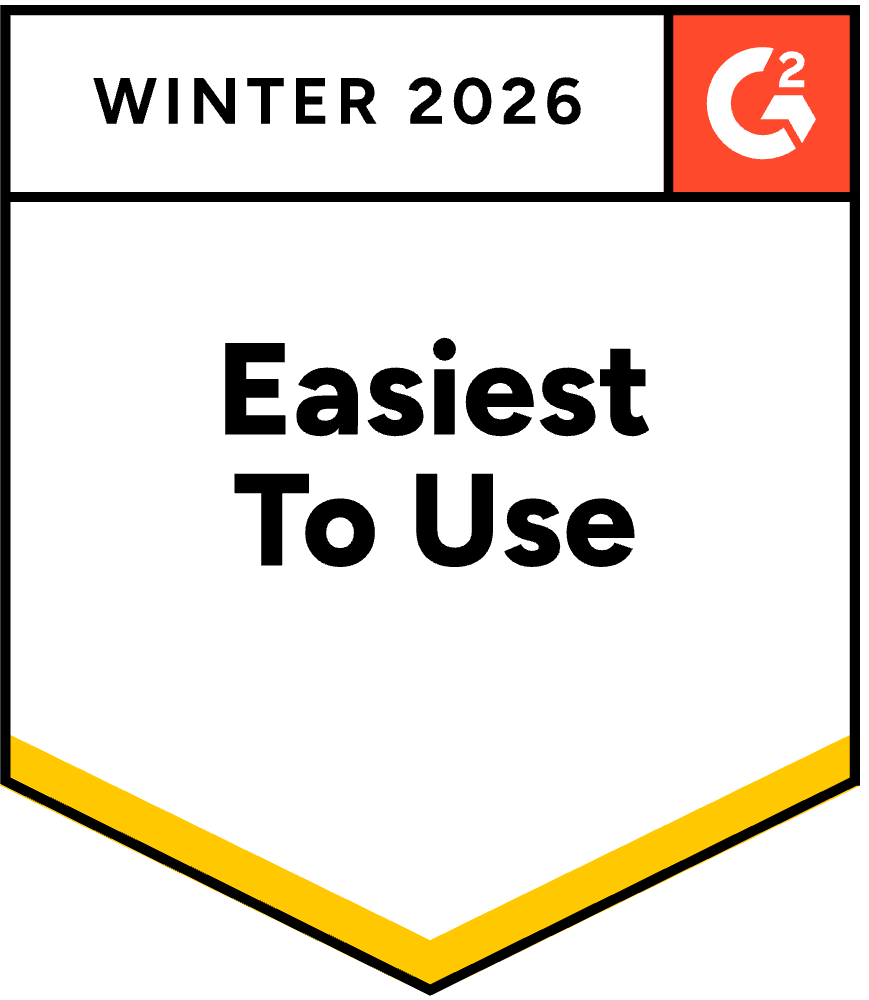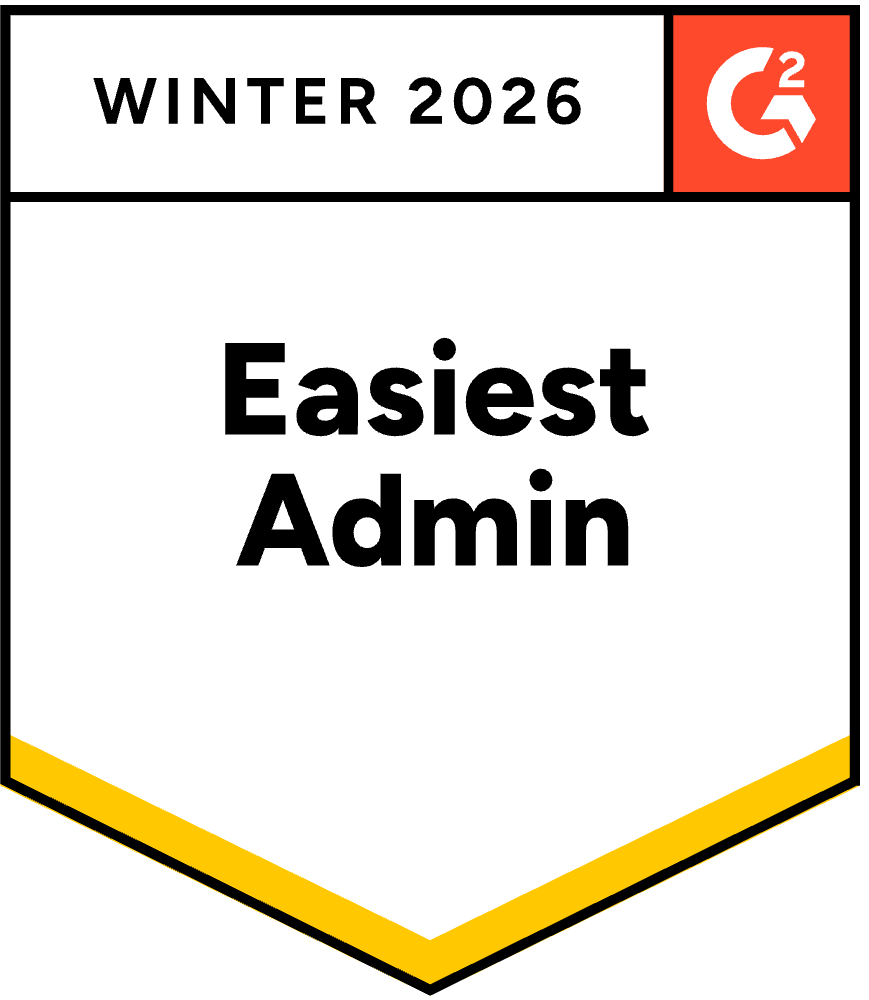Top 6 Providers for Streamlining DDQ Workflows
August 9, 2025
By
Evie Secilmis
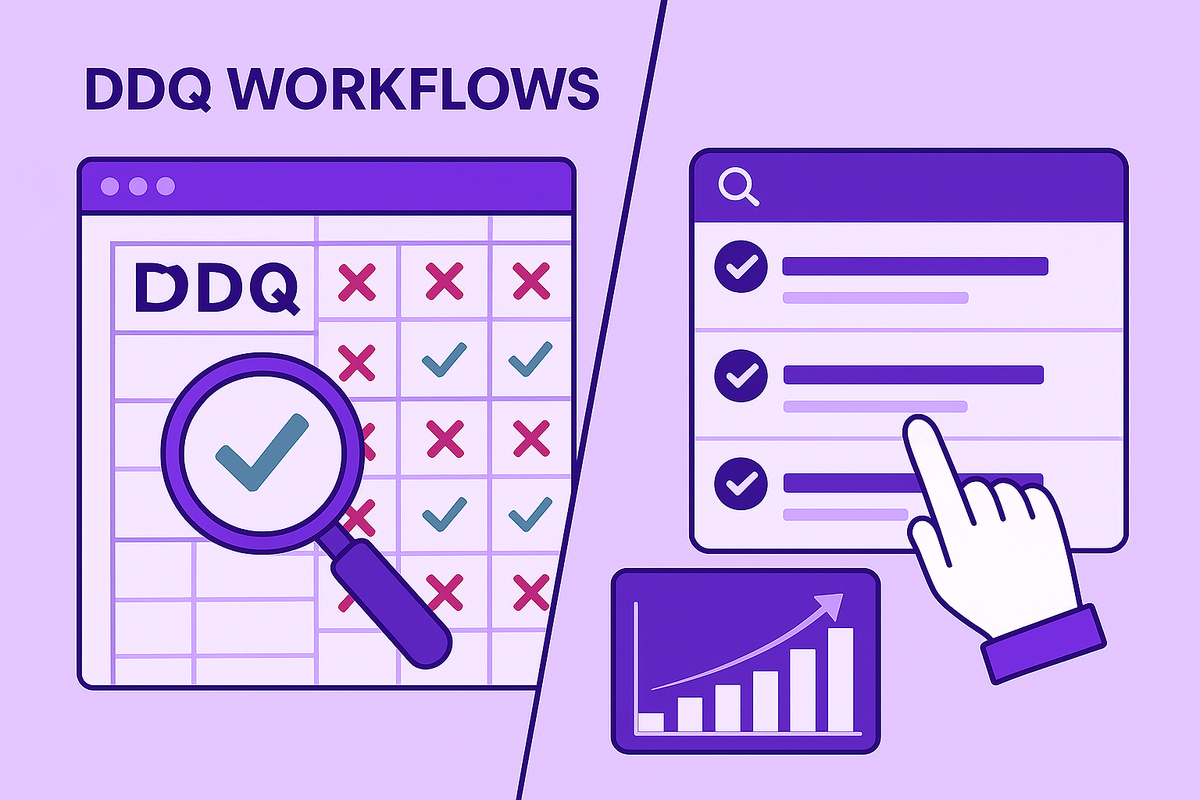
If you’ve ever managed a Due Diligence Questionnaire (DDQ) using a spreadsheet, you know the special kind of chaos it invites. It starts with a color-coded master file, but soon you’re wrestling with version control issues, chasing subject matter experts for answers you know they’ve given before, and manually copying and pasting information, hoping nothing gets lost in translation. This manual process isn’t just slow; it’s risky, opening the door to errors and inconsistencies that can jeopardize a deal. It’s time to move beyond the gridlock of cells and rows. This guide will show you how to transition to a more efficient system and answer the critical question: who are the top providers for streamlining DDQ workflows?
Tired of Spreadsheets? How to Streamline Your DDQ Workflow
When it comes to institutional investing and compliance, efficiency isn’t optional — it’s a competitive advantage. If your team is still managing Due Diligence Questionnaires (DDQs) in spreadsheets, you already know the pain: version-control chaos, manual data entry, and hours lost chasing down information instead of analyzing opportunities.
As the expectations for transparency, governance, and risk oversight increase, firms embracing automation and centralized intelligence are pulling ahead. Teams stuck in Excel are falling behind.
That’s why modern investment, compliance, and security teams are moving DDQ workflows into dynamic dashboards and automation platforms — transforming the process from reactive admin work into a strategic operational engine.
New to DDQs? Start with our guide on DDQ.
Why DDQs Matter More Than Ever
A DDQ helps investors evaluate a firm’s controls, performance, compliance posture, and operational maturity before allocating capital. They provide structure, reduce risk, and give stakeholders confidence in your internal processes.
But traditional spreadsheet-based DDQ management comes with major drawbacks:
- Manual data entry → higher error risk
- No real-time collaboration → siloed updates
- Limited audit & security controls
- Static, outdated responses
- Slower turnaround and deal delays
In high-stakes investing environments, speed, accuracy, and transparency win. Before diving into automation, revisit our glossary page on Due Diligence Questionnaires to align on fundamentals.
The Problem With Spreadsheet-Based DDQs
Managing DDQs in spreadsheets introduces three core challenges:
1) Inefficiency & Bottlenecks
As portfolios scale, so does your data. Spreadsheets quickly become slow, error-prone, and unsuited for complex relationships.
2) Collaboration Breakdowns
Version confusion, outdated attachments, and email chains slow down your team — especially across locations and time zones.
3) Security & Compliance Risk
When dealing with sensitive investor, security, and compliance information, spreadsheets simply don’t offer enough protection.
Why Dashboards Transform DDQ Management
A modern DDQ dashboard centralizes data, streamlines collaboration, and supports automated workflows — letting your team handle DDQs the same way leaders manage DDQ automation and RFP response automation.
Key advantages include:
✅ Real-Time Visibility
Interactive dashboards surface trends, insights, and gaps instantly — instead of digging through tabs and formulas.
✅ Collaboration Without Confusion
Multiple stakeholders work together in real time — aligned, informed, and always referencing the latest version.
Teams using platforms like AI-powered platform tools and Iris integrations eliminate update lag and confusion.
✅ Security & Compliance Confidence
Role-based access, audit logs, and encryption protect sensitive data beyond what spreadsheets offer.
✅ Automation & Alerts
From reporting to review flows, automated triggers reduce manual work and accelerate turnaround — similar to how DDQ automation and security questionnaire automation streamline trust workflows.
Implementation Roadmap
To migrate from spreadsheets to dashboards:
- Audit your current workflow — Identify bottlenecks & manual patterns
- Select a centralized platform — Prioritize automation, access control, and integrations
- Migrate data — Clean, organize, and structure your knowledge base
- Train teams — Ensure familiarity with dashboards & collaboration tools
- Monitor & iterate — Measure efficiency and compliance gains over time
Also explore how asset managers automate other workflows like RFPs, security questionnaires, and proposal automation.
Why This Shift Matters
Organizations who adopt automation platforms gain:
- Faster DDQ turnaround times
- Stronger compliance posture
- Higher investor trust
- Fewer manual errors
- Greater operational scale
The future of diligence is connected, intelligent, and automated. Moving beyond spreadsheets isn’t just an upgrade — it’s a strategic shift toward scalable operational excellence.
What is DDQ Automation Software?
If you've ever felt like you're drowning in a sea of security questionnaires and due diligence documents, you're not alone. DDQ automation software is designed to be your life raft. At its core, this software helps your business manage and respond to Due Diligence Questionnaires—those detailed forms that partners and investors use to vet your company. It automates the tedious parts of the process, like digging up security policies, finding compliance certificates, and ensuring every answer aligns with your company's standards. Instead of manually searching through old documents and bugging your subject matter experts for the tenth time, the software does the heavy lifting, turning a chaotic, manual task into a smooth, repeatable workflow.
How It's Different from a Dashboard or Shared Drive
You might be thinking, "Can't I just use Google Drive and a dashboard for this?" While those tools are great for storage and data visualization, they aren't built for the specific challenge of responding to questionnaires. A shared drive is like a digital filing cabinet—it holds information, but it doesn't help you find or use it intelligently. A dashboard shows you data but doesn't help you create a response. DDQ software, on the other hand, is a purpose-built solution. It acts as a central hub for all your company's verified information, making it easy to find the right answer, collaborate with your team in real-time, and generate polished, professional responses quickly.
Managing More Than Just DDQs
While the name focuses on DDQs, the power of this software extends far beyond them. Think of it as a comprehensive response management platform. The same system that helps you complete a DDQ can also tackle Requests for Proposals (RFPs), Requests for Information (RFIs), Vendor Security Questionnaires (VSQs), and Statements of Work (SOWs). The underlying goal is the same: centralize your company's knowledge and automate workflows to help your team respond to any business inquiry with speed and accuracy. This allows you to win more deals and build stronger partnerships by consistently delivering high-quality, timely information.
The Importance of DDQ Automation
Adopting DDQ automation isn't just about making your team's life easier; it's a strategic move to protect and grow your business. In a world where partnerships are critical, the way you handle due diligence speaks volumes. A slow, inconsistent, or inaccurate response process can raise red flags for potential clients and investors. According to a study by Verizon, a staggering 62% of data breaches can be traced back to issues with third-party partners. This highlights the immense pressure on businesses to prove their security and compliance. Automation provides the structure and control needed to meet these high standards, turning a potential liability into a competitive advantage.
Mitigate Third-Party Risk
When a potential partner sends you a DDQ, they're essentially asking, "Can we trust you with our business and our data?" A swift, thorough, and professional response is your best first impression. Using dedicated DDQ software demonstrates that you take security and compliance seriously. It ensures that every answer is pulled from an approved source, reducing the risk of human error or outdated information slipping through. This not only protects you from potential liability but also builds a strong foundation of trust with your partners from day one, showing them you have mature processes in place to manage risk effectively.
Improve Speed and Efficiency
Time is a resource no sales or proposal team can afford to waste. Manually completing DDQs is a notorious time sink, pulling your most valuable experts away from their core responsibilities to answer the same questions over and over. With automation, teams can respond to complex questionnaires up to 80% faster. The software can generate a complete first draft in minutes, allowing your team to focus on refining and personalizing the response rather than starting from scratch. This acceleration shortens the sales cycle, increases your team's capacity to handle more opportunities, and ultimately drives revenue growth.
Build Trust Through Consistency
When multiple team members contribute to a DDQ, maintaining a consistent voice and message is a major challenge. Without a central source of truth, you risk sending out responses with conflicting information or an off-brand tone. DDQ automation solves this by creating a single, approved knowledge library for everyone to use. This ensures that whether it's your newest sales rep or a senior engineer contributing, the answers are always consistent, accurate, and aligned with your company's official messaging. This consistency builds trust and reinforces your brand's professionalism with every document you send.
Key Features of DDQ Automation Platforms
When you start exploring DDQ automation software, you'll find that not all platforms are created equal. The right solution should feel like a natural extension of your team, equipped with features that streamline your entire response process. It’s more than just a search bar and a document repository. A truly effective platform combines artificial intelligence, robust collaboration tools, and seamless integrations to create a powerful engine for your sales and proposal teams. As you evaluate your options, there are several key features you should consider essential for transforming your workflow and driving better business outcomes.
AI-Powered Answering
The most impactful feature of modern DDQ software is its use of Artificial Intelligence. This goes far beyond simple keyword searching. An advanced AI engine, like the one powering Iris, can understand the context of a question and generate a precise, well-written answer from your knowledge library. It should also provide source validation, showing you exactly where the information came from. The best platforms even allow you to adjust the tone and style of the response, ensuring the AI-generated draft perfectly matches your company's voice before your team adds the final human touch.
Central Knowledge Library
Think of the central knowledge library as the single source of truth for your entire organization. This is where all your approved answers, company statistics, case studies, and security documentation live. A key feature to look for is intelligent content management. The system should make it easy to search, organize, and update information. Some platforms, including Iris, even proactively identify and flag outdated content across your connected systems, ensuring your responses are always built on the most current and accurate information available. This prevents the accidental use of old data and keeps your library fresh.
Standardized Questionnaire Templates
Many of the questionnaires you receive will follow a standard format, especially in areas like security and compliance (think SIG or CAIQ). A good DDQ platform will come with pre-built templates for these common questionnaires, saving you the effort of setting them up yourself. It should also give you the flexibility to create and save your own templates for recurring, client-specific requests. This feature standardizes your approach, ensures no question is missed, and dramatically speeds up the initial stages of any response project, letting your team get to the strategic work faster.
Advanced Collaboration Tools
Responding to a DDQ is rarely a solo effort. It requires input from sales, legal, IT, and other subject matter experts across the company. That's why advanced collaboration tools are non-negotiable. Look for features that allow your team to work on the same document simultaneously, leave comments, assign tasks with @-mentions, and track changes. A streamlined approval workflow is also critical, enabling you to get sign-off from stakeholders without ever leaving the platform. These tools eliminate confusing email chains and version control nightmares, creating a single, efficient workspace for your team.
Integrations with Your Business Tools
Your DDQ software shouldn't operate in a silo. To be truly effective, it needs to connect seamlessly with the tools your team already uses every day. Look for robust integrations with your CRM (like Salesforce), cloud storage (like Google Drive, SharePoint, and Confluence), and communication platforms (like Slack and Microsoft Teams). These connections create a fluid workflow, allowing you to initiate projects from your CRM, pull in supporting documents from cloud storage, and notify team members through your chat app. This integration prevents data fragmentation and makes the software a natural part of your existing processes.
Audit Trails and Compliance
For any business, but especially those in highly regulated industries, maintaining a clear record of your response process is crucial for compliance. A strong DDQ platform will automatically create a detailed audit trail for every project. This log should capture every action taken, including who answered which question, what changes were made, when approvals were given, and when the final document was submitted. This feature provides complete transparency and accountability, making it easy to demonstrate compliance and review your process for internal audits or in case of any disputes.
Examples of DDQ Software Providers
The market for DDQ and response management software is growing, with various providers focusing on different strengths. Some are built for speed and AI-powered automation, while others specialize in deep compliance or specific use cases like M&A. Understanding these nuances can help you find the right fit for your team's specific needs. Whether you're a fast-moving sales team looking to accelerate your cycle or a compliance officer focused on risk management, there's likely a solution tailored to your priorities. Here’s a look at some of the key players, categorized by what they do best.
For AI-Powered Automation
If your primary goal is to generate high-quality first drafts in record time, you'll want a platform with a strong AI core. Solutions like HeyIris.ai and Loopio are leaders in this space. They use advanced AI to not only find answers but to synthesize information and craft new responses. These platforms are ideal for sales and proposal teams that handle a high volume of complex questionnaires (RFPs, DDQs, VSQs) and need to reduce the time spent on manual writing while ensuring accuracy and brand consistency across every response.
For Compliance Teams
For teams where Governance, Risk, and Compliance (GRC) are the top priorities, platforms like Whistic and 6clicks are excellent choices. These tools are designed to help you manage third-party risk assessments and streamline compliance workflows. They often include features for sending, receiving, and evaluating security questionnaires, making them a central hub for your vendor risk management program. Their focus is less on sales enablement and more on creating a defensible and auditable compliance process for your entire vendor ecosystem.
For Mergers & Acquisitions (M&A)
The due diligence process during a merger or acquisition is uniquely intense and requires specialized tools. Platforms like Datasite and Midaxo are built specifically for this purpose. They provide secure virtual data rooms (VDRs) where sensitive documents can be shared, reviewed, and managed by all parties involved in a deal. Their features are tailored to the M&A lifecycle, including project management, granular permissions, and detailed audit trails to ensure the process is secure, efficient, and compliant from start to finish.
For Vendor Security Ratings
Sometimes, due diligence involves assessing a vendor's external security posture without relying solely on their questionnaire responses. This is where platforms like SecurityScorecard come in. They continuously monitor and rate companies based on publicly available data, providing an objective, at-a-glance security score. While not a DDQ response tool, it's a critical part of the broader due diligence landscape, often used alongside questionnaire platforms to get a more complete picture of a third party's risk profile.
For Board-Level Governance
When due diligence extends to the highest levels of corporate governance, tools like Diligent are often the platform of choice. Diligent provides a secure solution for board management, enabling directors to access materials, communicate, and manage governance responsibilities. While its scope is much broader than just DDQs, it plays a key role in ensuring that board-level decisions are informed by proper diligence and that all related documentation is handled with the utmost security and confidentiality, making it a staple in corporate boardrooms.
For Private Markets
In the world of private equity and venture capital, dealmaking requires speed, security, and efficiency. Ansarada is a platform designed to support the entire deal lifecycle in private markets. Like M&A platforms, it offers secure virtual data rooms but is also tailored to the unique workflows of capital raising and asset management. It helps firms manage due diligence, streamline communication with investors, and maintain compliance, making it a popular choice for fund managers and dealmakers operating in the fast-paced private capital landscape.
Common Questions About Adopting DDQ Software
Making the switch to a new software platform can feel like a big step, and it’s natural to have questions. Many teams wonder about the quality of AI-generated content, the effort required to get started, and whether the investment makes sense for their company's size. These are all valid concerns, and addressing them head-on can help you make a confident decision. The good news is that modern DDQ platforms are designed to be user-friendly and deliver a clear return on investment, but it's important to understand how they work in practice before you commit.
Will AI answers sound robotic?
This is one of the most common concerns, and thankfully, the answer is no. Modern AI has come a long way from the clunky, robotic text of the past. Today's advanced platforms use AI to create a strong, contextually relevant first draft, not a finished product. Your team of experts still has the final say, allowing them to refine the tone, add personalization, and ensure the answer perfectly fits the situation. The AI handles the 80% of repetitive work, freeing up your people to add the critical 20% of human insight and strategy that makes a response compelling.
Is it difficult to get started?
There is an initial setup phase, and it's important to be realistic about it. The main task is populating your central knowledge library with your existing company information, approved answers, and supporting documents. While this requires some upfront effort, think of it as a one-time investment that will pay dividends for years to come. The best software providers offer dedicated support and onboarding services to make this process as smooth as possible. Once your library is set up, the time savings on every subsequent questionnaire are immediate and substantial.
Is this software only for big companies?
Not at all. While large enterprises with dedicated proposal teams certainly benefit, DDQ software can be even more impactful for small and mid-sized businesses. Smaller teams often have fewer resources and can't afford to have their top talent bogged down with administrative tasks. By automating the response process, this software allows smaller companies to compete with larger players, respond to more opportunities, and present a highly professional and polished image to potential partners and clients. Any business that spends significant time answering detailed questionnaires can see a strong return on investment.
Frequently Asked Questions
How much work is it to get our existing information into the system? Getting started does require an upfront investment of time, but it's more manageable than you might think. The main task is to gather your best-approved answers, security documents, and company information to create your central knowledge library. Think of it as a one-time spring cleaning for your content. The best platforms have dedicated onboarding teams to guide you through this process, helping you import data efficiently. Once that foundation is built, the time you save on every single questionnaire provides an immediate and ongoing return.
Will the AI-generated answers be good enough to send to a potential partner? The goal of the AI isn't to create a final, submittable document on its own. Instead, it produces a high-quality first draft in minutes, handling about 80% of the repetitive work. This frees your team from the tedious task of hunting for information and copying and pasting. Your subject matter experts can then step in to add the crucial 20%—the strategic insights, personalization, and final polish that make the response truly compelling. It’s a partnership between AI efficiency and human expertise.
Our questionnaires are often unique. Can this software handle custom or non-standard formats? Absolutely. While having templates for standard questionnaires like the SIG or CAIQ is a huge time-saver, a powerful platform isn't limited by them. The core technology is designed to read and understand questions regardless of the document's layout. You can upload any questionnaire, and the AI will parse the questions and suggest the best answers from your knowledge library. This flexibility ensures you can tackle any request that comes your way, whether it's a standard form or a completely custom document from a new client.
How do we keep the information in the knowledge library from getting stale? This is a critical point, and a great platform will have features built specifically to prevent this. You can assign owners to specific pieces of content and set automatic review cycles, so your experts are prompted to verify information on a regular basis. Some advanced systems, like Iris, even proactively scan your library to identify and flag content that seems outdated. This turns content management from a reactive chore into a proactive, automated process, ensuring your team is always working with the most current and accurate information.
At what point does it make sense to switch from spreadsheets to a dedicated platform? There isn't a magic number, but there are clear signs. If you're spending more time managing version control than you are crafting quality answers, it's time. If your subject matter experts are constantly being pulled away from their core jobs to answer the same questions repeatedly, it's time. And if you've ever worried that a slow or inconsistent response might have cost you a deal, it's definitely time. The switch makes sense when the hidden costs of the manual process start to outweigh the convenience of a simple spreadsheet.
Key Takeaways
- Move beyond manual spreadsheets: Relying on spreadsheets for DDQs creates unnecessary risks, from version control chaos to inconsistent answers that can undermine a potential partnership.
- Centralize your knowledge for consistent answers: A dedicated DDQ platform acts as your company's single source of truth, ensuring every response is accurate, approved, and perfectly on-brand.
- Use automation to focus on strategy, not admin: By automating the repetitive parts of the response process, your team can spend less time searching for information and more time personalizing proposals and winning deals.
Related Articles
Share this post
Link copied!



